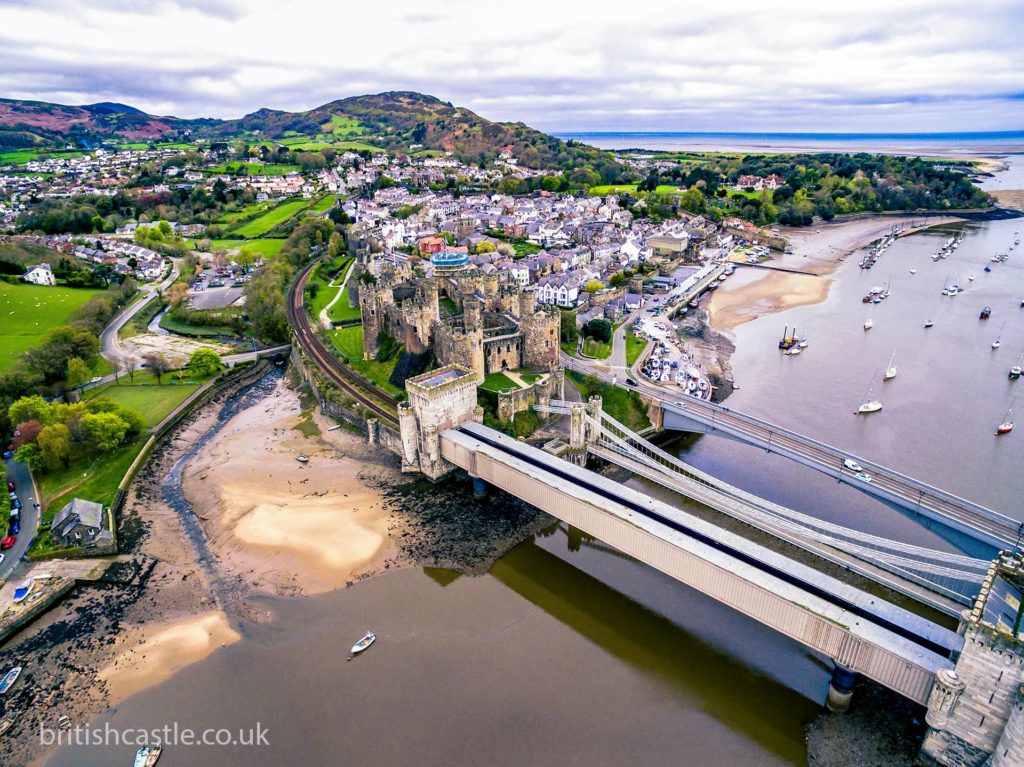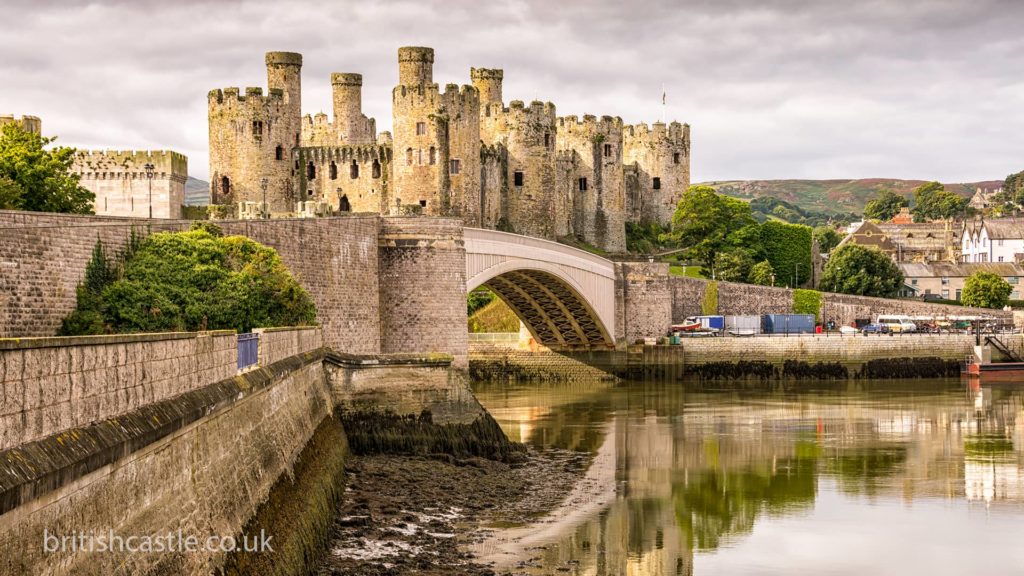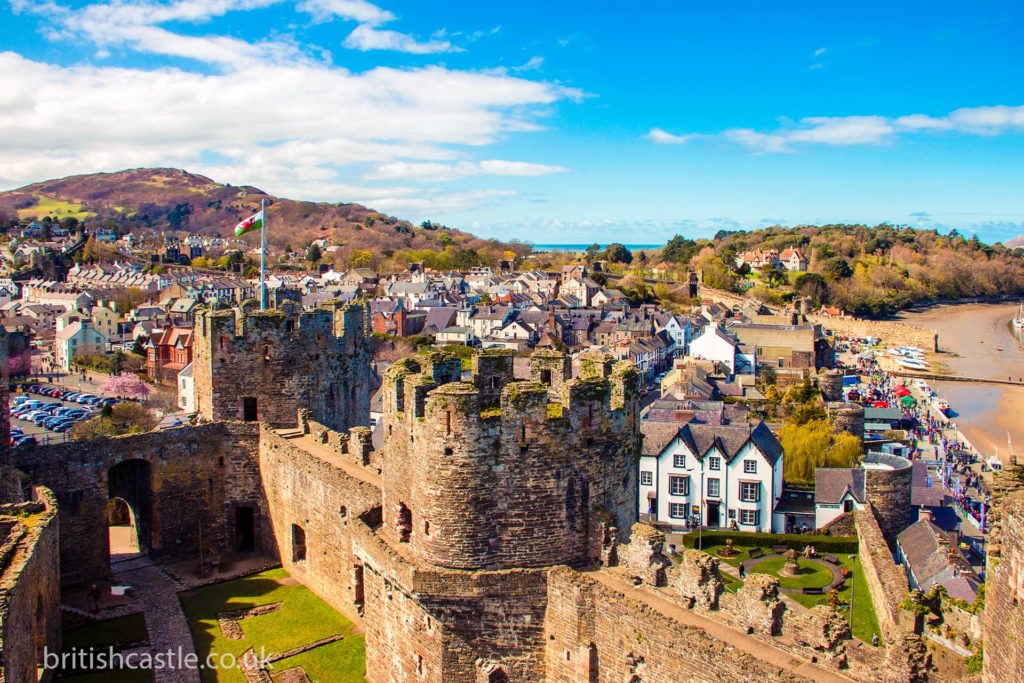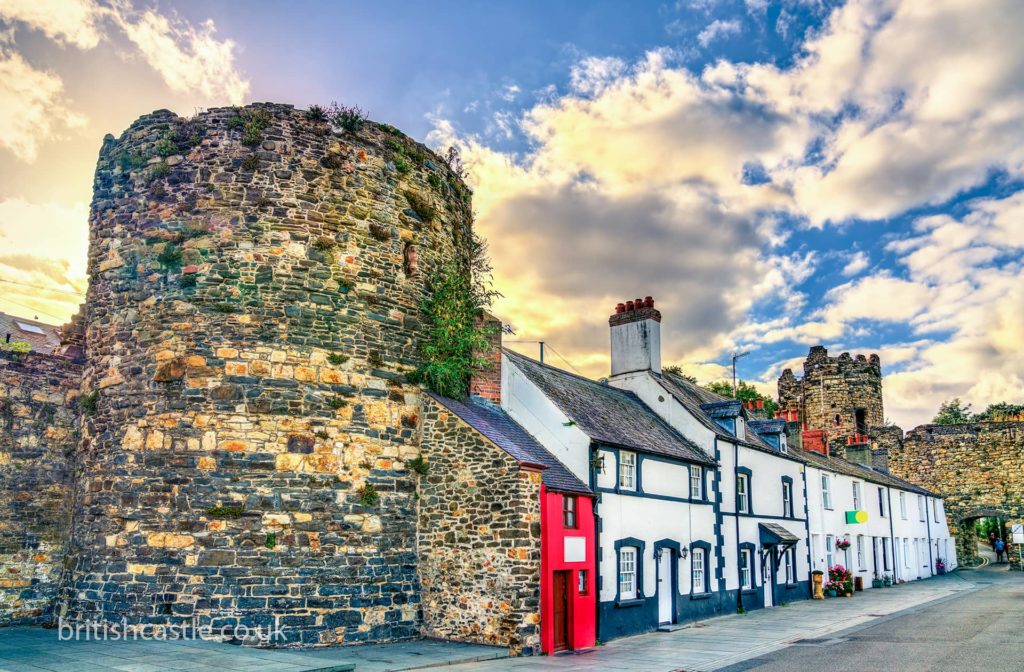As medieval fortifications go, the great Town Walls of Conwy are about as iconic as it gets. Despite their age, these massive vestiges are mostly intact and still give the illusion of providing protection and enclosure around the town for which they are named.
Described by historians as one of the most impressive walled circuits in all of Europe, Conwy Town Walls have weathered centuries of storms, seen countless battles and, amazingly, remain standing in place––nearly 800 years later.

Conwy Castle and Town Walls construction
Before the English invasion of Wales, led by King Edward I, the site that is now home to Conwy Castle had been the location of Aberconwy Abbey, a Cistercian monastery heavily favoured by the Welsh princes. Despite, or perhaps because of this association, and following Aberconwy’s capture in 1283, Edward decided that it would form the centre of a new heavily colonised county. Construction began soon after that.

Conwy Castle and its Town Walls were built in tandem, under the supervision of Royal Mason James of St. George, whose Savoy-influenced design style would appear throughout the series of Welsh castles and other defensive structures built at this time.
When were Conwy Town Walls Built?
Between 1284 and 1285, Richard the Engineer, James of St. George’s second in command, built the western side of the walls––the most vulnerable to attack. In 1286, John Francis, a Savoyard mason, finished work on the southern side, while the remaining walls and towers were completed the following year.
In all, the walls took five years to construct and, including the construction of Conwy Castle (costs for the fortress and the walls were not separated), the total came to £15,000, a massive number for the time. That’s equivalent to over £20 million in today’s money.
What were Conwy Town walls made from?
Also, like Conwy Castle, the town walls were built primarily using the same local sandstone and limestone, but with additional rhyolite stone fitted along the upper parts of the eastern walls. This eastern section of wall, which emerges from Conwy Castle, consists of four towers, with a postern gate that gives access to the town’s quay.

The west side of the wall includes nine towers, rising towards the south-west corner. The western walls originally extended out into the River Conwy itself, ending in a round tower, though this feature has since been lost.
The walls stretch across the south of the town with eight towers and two gatehouses. In total there were 21 towers and three gateways dotted throughout the length of the walls. During the medieval period, the Upper Gate formed the town’s main inland entrance where a gatekeeper would have lived during its heyday.
Conwy Town Walls through the years
Much like the battles and sieges experienced at Conwy Castle, the town walls bore witness to the 1400 Glyndwr Rebellion where, despite the defences, Conwy was occupied for two months in 1401. Conwy’s walls also served as a backdrop for much of the infighting between the Lancastrians and the Yorkists during the War of the Roses between 1455 and 1485.
Tudor influence?
Half a century later, records show that the walls had been repaired in the 1530s by Henry VIII in preparation for a royal visit––that may or may not have actually occurred, as the ascension of the Tudor family to the English throne resulted in a change in the way Wales was administered. Interestingly, during this time, parts of the town walls were robbed for their stone and used in the construction of local buildings.
Modern Times
Over the centuries, Conwy’s town walls became subject to modernisation measures, including the addition of a mock-Gothic archway that was carved into the façade in 1846 in order to accommodate the local railway. The walls were architecturally surveyed for the first time during the period between 1928 and 1930.

They were also leased from the local Conwy authority by the Ministry of Works in 1953, at which time a considerable restoration effort began. During the 1960s, historian Arnold J. Taylor conducted extensive academic work on the history of Conwy’s walls, thus creating a renewed interest in the site as an international attraction.
World Heritage status
Conwy Town Walls were designated a Grade I listed building in 1950, and made a UNESCO World Heritage Site, along with the other fortresses part of the Castles and Town Walls of King Edward in Gwynedd in 1986.
Conwy Town Walls today
Today, the triangular, 1.3km long circuit making up the Conwy Town Walls remains largely unbroken, enclosing 25 acres of the well-preserved local town.
Touring the Conwy Town Walls is a popular attraction for history buffs and architecture aficionados alike. Managed by Cadw, like many of the other fortresses and fortifications of King Edward I, groups can frequently be seen tramping around the outside of the imposing structures, performing full circuits from one end of the base to the other.
For those brave enough to scale take the heights, access points at the Upper Gate and at Tower 5 make it possible for tourists to take a wall walk along the top of the north wall and gaze out at the abutting town, the River Conwy, and the lush green valleys of North Wales––as far as the eye can see.